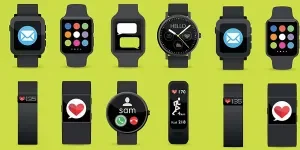Table of Contents
● Introduction
● Market overview
● Things to consider when selecting products
● Important accessories for enhanced presentations
● Conclusion
Introduction
In the realm of professional communication and education, projectors and presentation equipment have become indispensable tools, enhancing engagement and clarity in every presentation. Their importance spans across business meetings, educational sessions, and even home entertainment, ensuring that messages are not just delivered but experienced. The selection of such equipment, therefore, necessitates a deep dive into technological compatibilities, performance capabilities, and the seamless integration of additional audio-visual aids. This careful consideration ensures that presentations resonate more effectively with audiences, transforming standard delivery into memorable, impactful experiences. As the market continues to evolve, staying informed and making precise choices in presentation technology has never been more critical.
Market overview

The projector and presentation equipment market is on a trajectory of significant growth, with projections indicating an increase from $10.68 billion in 2023 to an impressive $14.02 billion by 2028. This upward trend, marked by a Compound Annual Growth Rate (CAGR) of 5.5%, signals not just the expanding adoption of these technologies across various sectors but also underscores their evolving role in enhancing communication and entertainment experiences. The CAGR is a testament to the industry’s resilience and its adaptability to emerging trends and technological advancements, pointing towards a future where projectors and presentation tools are even more integrated into our daily lives.
Product segmentation
This market’s segmentation reveals a diverse landscape, catering to a wide range of needs and applications. From the perspective of type, the industry categorizes offerings into home theater projectors, business projectors, and portable projectors, each serving distinct purposes ranging from entertainment to professional presentations. Technological variations further segment the market into DLP (Digital Light Processing), LCD (Liquid Crystal Display), and LCOS (Liquid Crystal on Silicon), with each technology offering unique benefits in terms of image quality, brightness, and longevity. The market also spans various dimensions, including 2D and 3D, and utilizes multiple distribution channels such as hypermarkets, electronic malls, specialty stores, and online retail, demonstrating the versatility and accessibility of projector technology. Applications stretch across business, education, home cinema, and other uses, highlighting the projector’s role as a multifaceted tool.
Driving trends
Driving the industry forward are key market changes and technological innovations that have reshaped consumers’ and businesses’ expectations. Advances in laser and LED projection technology have significantly improved projector brightness, energy efficiency, and lifespan, making them more appealing for both home and corporate settings. Furthermore, the integration of smart technologies and connectivity options has elevated projectors from mere display devices to interactive tools that facilitate collaboration and learning. These developments not only reflect the industry’s response to changing user demands but also pave the way for future innovations that will continue to enhance the efficacy and appeal of projectors and presentation equipment.
Things to consider when selecting products
Selecting the right projector and presentation equipment is a nuanced decision that hinges on understanding specific technical aspects crucial to meeting the diverse needs of users. Whether for home entertainment, educational purposes, or business presentations, the choice of projector technology, performance specifications, and compatibility features must align with the intended use and environment.
Understanding projector types and technologies

The choice between DLP (Digital Light Processing), LCD (Liquid Crystal Display), and LCOS (Liquid Crystal on Silicon) technologies is foundational. DLP projectors utilize a chip made of tiny microscopic mirrors and a spinning color wheel to project images. This technology is prized for its durability, consistent color accuracy, and 3D capabilities, making it suitable for a range of applications from business presentations to home theaters. LCD projectors, on the other hand, use liquid crystal displays, offering brighter images and sharper colors without the “rainbow effect” sometimes seen in DLP projectors. They are particularly effective in environments with ambient light. LCOS projectors blend the advantages of DLP and LCD, offering superior resolution and color saturation, making them ideal for high-end presentations where detail and color accuracy are paramount.
Performance specifications
Technical specifications such as lumens, resolution, contrast ratio, and throw distance directly impact the projector’s utility and effectiveness. Lumens measure the projector’s brightness; models ranging from 1,000 to 3,000 lumens are suitable for dark to moderately lit rooms, whereas environments with high ambient light may require over 3,000 lumens for clarity. Resolution is critical for image detail, with 1080p being a standard for clear, high-definition images, though 4K resolution is gaining traction for its unparalleled detail and clarity, especially in home theaters. The contrast ratio, indicating the difference between the darkest black and the brightest white, enhances image depth. A higher ratio means more vivid images, with ratios of 10,000:1 or higher being desirable for dynamic, visually engaging presentations. Throw distance affects the projector’s placement relative to the screen, with short-throw projectors capable of producing large images from a short distance, reducing shadows and glare.
Compatibility and connectivity
In today’s interconnected world, a projector’s compatibility with various devices and its connectivity options are paramount. HDMI remains the standard for good quality digital video and audio, but options like Wi-Fi and Bluetooth are increasingly important for wireless presentations and streaming. USB Type-C is another valuable feature, offering video, audio, and power in a single cable, ideal for quick setups with laptops and mobile devices. Additionally, projectors with multi-platform compatibility, supporting both Windows and MacOS, ensure versatility across different user ecosystems.
Usability and portability
Ease of use and portability are especially important for users who need equipment that is ready to perform in a variety of settings. Portable projectors are evolving, with newer models offering intuitive interfaces, quick setup features, and lightweight designs. Battery-operated models provide the flexibility to present without needing a power outlet, suitable for impromptu sessions anywhere. Features like keystone correction, which adjusts the image for any angle, and built-in speakers, for immediate audio output, further enhance a projector’s usability out of the box.
Understanding these technical details is crucial for potential buyers, guiding them to make informed choices based on their specific needs, whether it’s delivering dynamic presentations in a corporate setting or enjoying cinematic experiences at home.
Important accessories for enhanced presentations

Audio equipment
The clarity of audio can make or break a presentation. Portable speakers and wireless microphones are indispensable for ensuring a message is heard, regardless of venue size. Portable speakers offer flexibility and mobility, enabling clear sound projection in various environments without the need for built-in audio systems. Wireless microphones, free from the constraints of cables, allow presenters to move freely, fostering a more dynamic interaction with the audience. They’re particularly useful in larger rooms or outdoor settings, where projecting one’s voice becomes a challenge.
Visual aids
Beyond the projector, visual aids like flipcharts and advanced video screens can significantly enhance audience engagement. Flipcharts provide a simple yet effective way to illustrate points or jot down ideas spontaneously, fostering an interactive atmosphere. On the technological end, good quality video screens and video walls bring presentations to life, offering immersive visuals that can captivate and hold the audience’s attention. The flexibility of video walls, in particular, allows for creative content displays, from detailed data visualizations to impactful video content, making complex information more digestible.
Control devices
Managing the seamless display of content across these advanced visual systems requires robust control devices. Video wall controllers, matrix switchers, and processors play a critical role in this aspect. They enable presenters to manipulate multiple input and output signals, creating dynamic and engaging presentations. With these devices, it’s possible to switch content sources effortlessly, divide screens for side-by-side comparisons, or even overlay text on live video feeds, providing a versatile toolkit for delivering compelling presentations.
Connectivity solutions
The backbone of a smooth presentation is often found in the less glamorous but essential connectivity solutions. Spare HDMI cables and adaptors ensure that presentations can go on without a hitch, regardless of the compatibility between the presentation device and the display equipment. Given the variety of devices and formats present in today’s digital ecosystem, having a selection of adaptors can save the day, allowing presenters to connect laptops, tablets, or other media devices to their chosen presentation equipment without delay.
Incorporating these additional equipment and tools into a presentation setup not only elevates the quality of the presentation but also ensures that the audience remains engaged and receptive to the message being delivered. With the right combination of projector technology and supplementary equipment, presenters can create memorable and effective presentations that stand out.
Conclusion

Navigating the evolving landscape of projectors and presentation equipment demands an awareness of current market trends and technological advancements. The ability to discern between various projector technologies, along with a comprehensive understanding of the auxiliary equipment that enhances audio-visual presentations, is essential for success in today’s dynamic environments. By meticulously considering the factors and equipment outlined, individuals and organizations can ensure their presentations not only convey their intended message effectively but also engage and captivate their audiences. Ultimately, staying informed and adaptable in the selection of presentation technology is key to creating impactful, memorable presentations that resonate with audiences across any setting.




